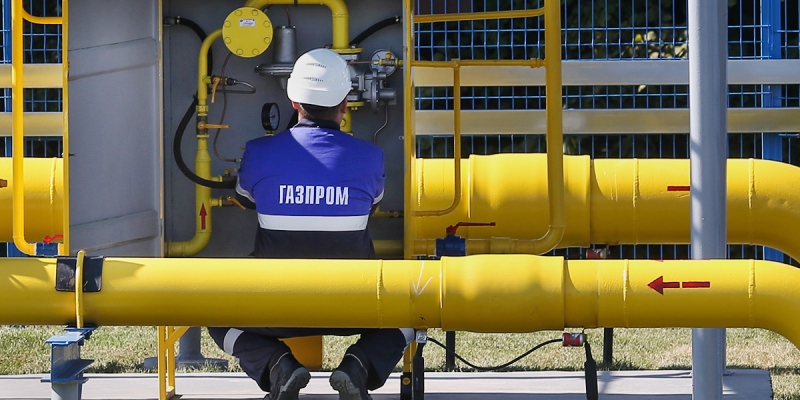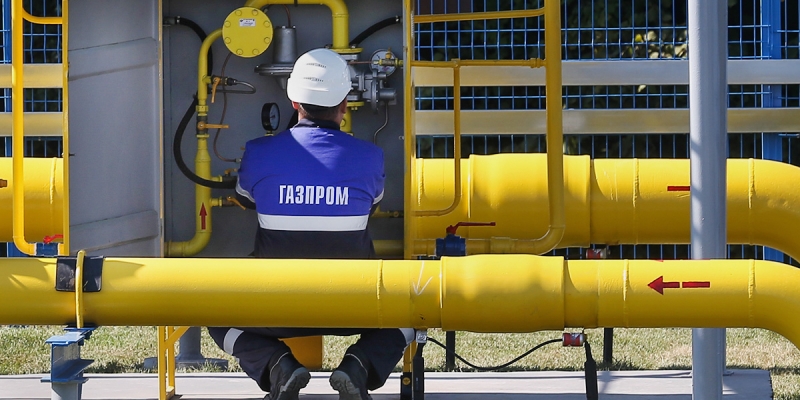In Gazprom saw no obstacles to the continuation of the Sokhranovka gas station in Ukraine, Gazprom sees no obstacles to the further transit of Russian gas through Sokhranovka gas station and Novopskov Gas Station in Ukraine. Kiev previously announced the termination of transit through this station, which is not controlled by the Ukrainian side

“Gazprom” has not received confirmation of the circumstances of “force majeure”, which was previously reported by the Operator of the gas transportation system of Ukraine, announcing the termination of gas transit through the gas distribution station “Sokhranovka” on May 11. The Russian company stated that they do not see any obstacles to the continuation of the operation of the GRS “Preservation” in the previous mode.
«Ukrainian specialists have been quietly working all this time at the GRS «Sokhranovka » and the CS «Novopsk » and continue to do it, transit through «Sokhranovka » was provided in full, there were no complaints from contractors and there are no »,— stressed in «Gazprom».
Also, the company found it impossible to transfer capacities from the connection point “Sokhranovka” to the point “Sudzha”, based on the Russian streaming scheme. “The distribution of volumes is clearly spelled out in the cooperation agreement of December 30, 2019, and the Ukrainian side is well aware of this,” Gazprom noted.
The Russian company stated that it fully fulfills all its obligations to European consumers and supplies gas for transit in accordance with the contract and the operator agreement.
Earlier, the operator of the GTS of Ukraine announced that from May 11 it will stop the transit of Russian gas to Europe through the gas distribution station “Sokhranovka” in the Luhansk region due to “force majeure”.
The message said that this station is not controlled by the Ukrainian side.
Read on RBC Pro Pro Staff reduction risks: how not to fall into the trap Instructions Pro Top manager received an offer in a crisis: when to agree Articles Pro Fast Time: why companies started firing slow-witted managers Articles Pro So-so motivation: why it’s not worth tying salary to KPI Research Pro Why Amazon shares collapsed and what there will be further Articles about the Dark side of the state defense order: what to consider in order not to get behind bars Instructions about the Dictator-innovator: how the putschist became the creator of the economic miracle of the Article Pro The EU wants to disconnect the “Beac” from SWIFT. What does this mean for the bank and its shares Forecasts
Also, the Ukrainian operator considered it impossible to further transport gas through the border compressor station (CS) “Novopsk”. The Ukrainian side proposed to temporarily transfer inaccessible capacities from the connection point “Sokhranovka” to the point “Sudzha”.
Gazprom and Naftogaz signed a five-year gas transit agreement to Europe in 2019. His term expires in December 2024. During this period, Russia has pledged to pump 225 billion cubic meters of gas through Ukraine.
At the end of March, the head of the Ukrainian Naftogaz, Yuriy Vitrenko, said that gas transit through Ukrainian territory would continue as long as it was technically possible. Gazprom has repeatedly reported on the regular transit of gas through Ukraine.
Until now, the gas distribution station “Sokhranovka” and the compressor station “Novopskov” were among the main stations through which Russian gas was transited to Europe. According to the Operator of the GTS of Ukraine, the KC “Novopsk” is the first of the compressor stations of the Ukrainian GTS in the Luhansk region, through which almost a third of the gas transit (up to 32.6 million cubic meters) was carried out. m per day) from Russia. So, on May 10, Gazprom supplied 95.8 million cubic meters of gas for transit through the territory of Ukraine in accordance with the confirmed requests of European consumers.
According to Gazprom, Ukraine now accounts for about 30% of Russian gas transit to Europe. If the Ukrainian side stops receiving gas from Russia from “Sokhranovka” and “Novopskov”, then transit may be reduced by 10%.
Other Russian gas supply routes include a gas pipeline through Belarus and Poland, Yamal, Europe, and Nord Stream-1 (along the bottom of the Baltic Sea).
Materials for the article Authors Tags Subscribe to RuTube RBC Live broadcasts, videos and recordings of broadcasts on our RuTube channel

